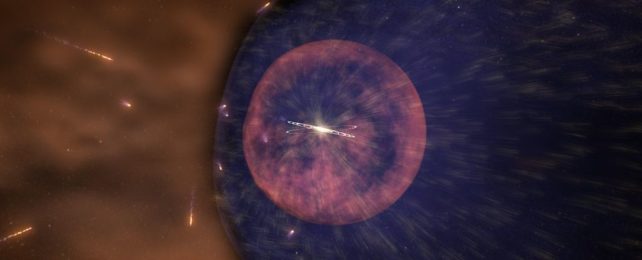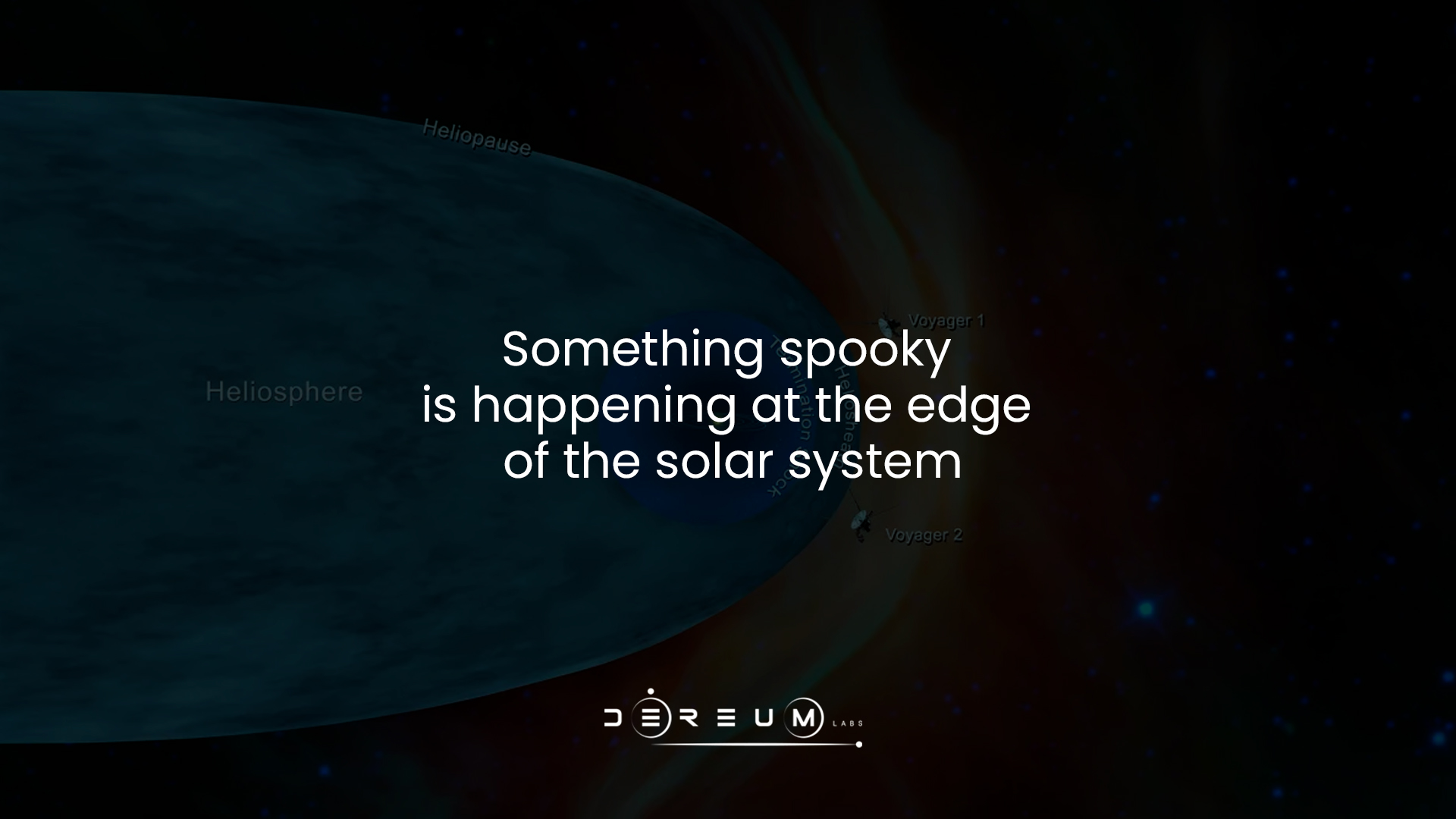Just in time for Halloween, scientists have discovered something spooky and strange occurring at the edge of the solar system: The heliopause — the boundary between the heliosphere (the bubble of solar wind encompassing the solar system) and the interstellar medium (the material between the stars) appears to be rippling and creating oblique angles in an unexpected manner.
The general concept that the heliopause changes shape is not new; over the past decade, researchers have determined that it is not static. They made this discovery using data from Voyager 1 and Voyager 2, the only two spacecraft to exit the heliosphere thus far, as well as NASA’s Interstellar Boundary Explorer (IBEX) satellite, which studies the emissions of energetic neutral atoms (ENAs) that are created when solar winds and the interstellar medium interact.
«The Voyager spacecraft provide the only direct, in situ measurement of the locations of these boundaries. But only at one point in space and time,» Eric Zirnstein, a space physicist at Princeton University, wrote in an email to Vice. IBEX helps round out that data.
Scientists have used the data to create models that predict how the heliopause changes. In a nutshell, solar winds and the interstellar medium push and pull on each other to create an ever-moving boundary.

But recent research into the heliopause has surfaced data that contradict previous findings. Over a period of several months in 2014, IBEX captured the brightening of ENAs that indicated asymmetries in the heliopause, and the team later realized those asymmetries were incongruous with the models, Vice noted.
Furthermore, in reviewing data from the journeys of Voyager 1 and Voyager 2, the scientists discovered that the heliopause changed dramatically in a very short period of time. That helps to explain why there was such a large gap between the two probes’ entrances into interstellar space, which happened in 2012 and 2018, respectively. But that kind of movement by the heliopause also clashes with the models.
In a paper published Oct. 10 in the journal Nature Astronomy, the researchers called these discrepancies «intriguing and potentially controversial.» They plan to continue studying the heliopause, hoping to gain more insight from NASA’s Interstellar Mapping and Acceleration Probe, a new-and-improved satellite that can detect ENAs and is scheduled to launch in 2025, Zirnstein told Vice.
Until then, we can only ponder this eerie phenomenon happening in the haunting depths of the solar system.
Source: Space
We recommend you: Pizza Hut sent pizza to the International Space Station

